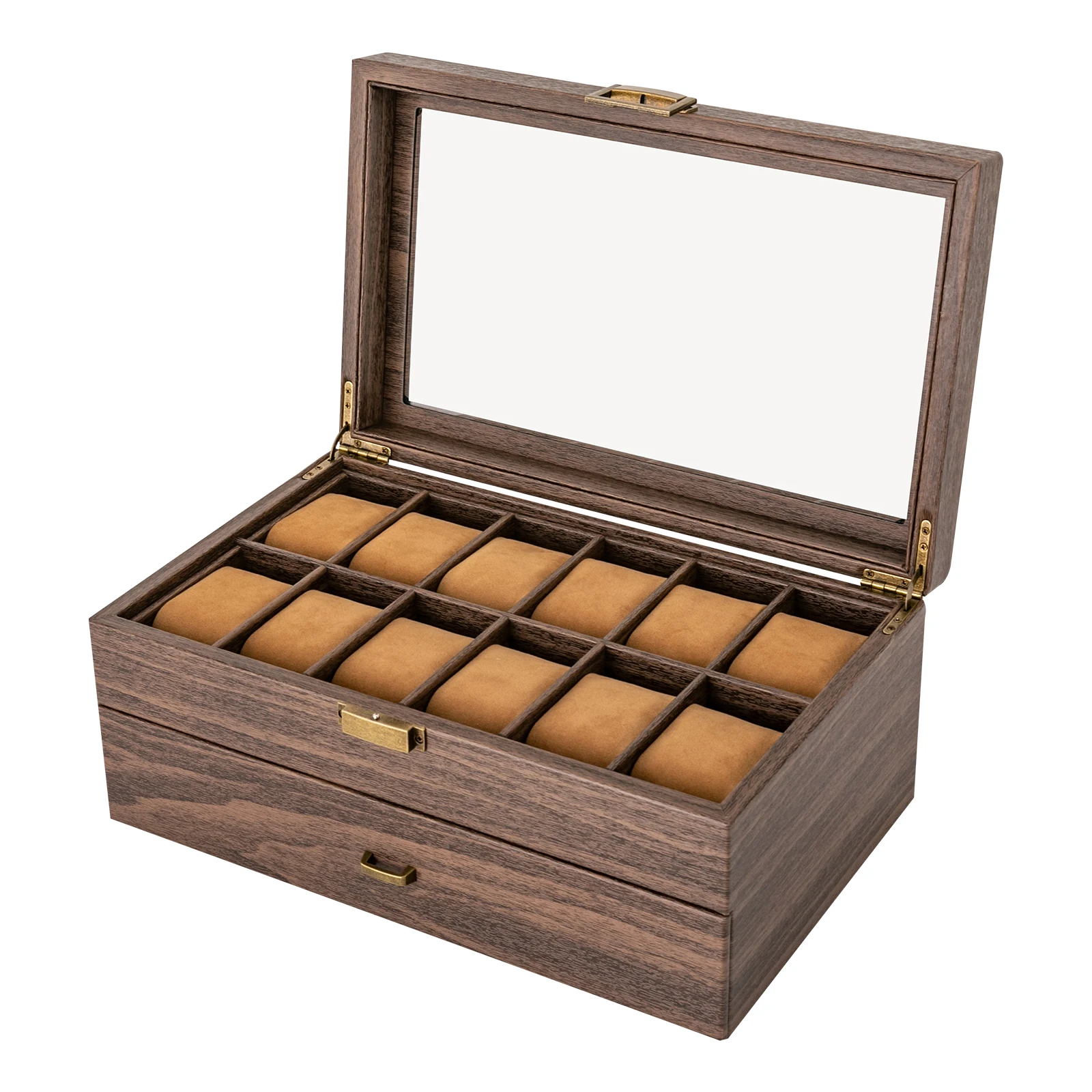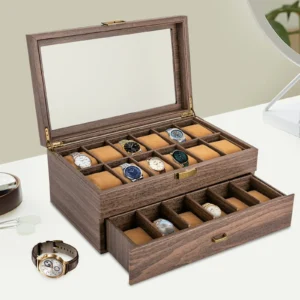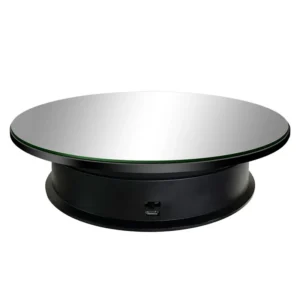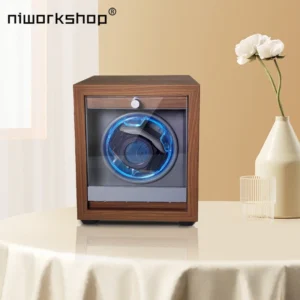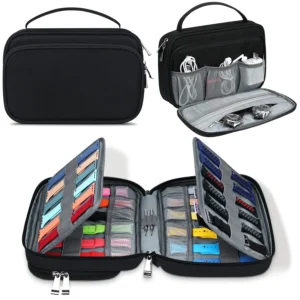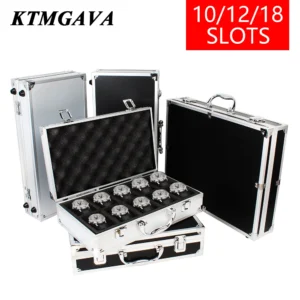What Do We Call the Display on a Watch?
When looking at a timepiece on your wrist, the part that shows you the time has specific names depending on the type of watch you own. For traditional analog watches with hands pointing to numbers, the display is commonly called the “dial” or “watch face.” This is the flat surface beneath the crystal where you read the time.
For digital watches that show time with numbers and letters, the display is typically referred to as a “digital display,” “LCD panel” (Liquid Crystal Display), or “LED screen” (Light Emitting Diode), depending on the technology used.
Understanding these terms is especially helpful when shopping for watches, discussing repairs, or simply appreciating timepieces. The display is the most visible and defining element of any watch, serving as both the functional interface and the primary aesthetic feature.
Whether you’re admiring a classic Rolex with its iconic black dial or checking the time on a Casio with its practical LED display, understanding watch displays is crucial for proper home display and appreciation of these intricate timepieces.
The Analog Watch Display: Understanding the Dial
The dial is the heart of an analog watch’s visual identity. Acting as the backdrop for the hands, it serves the fundamental purpose of helping you read the time while also expressing the watch’s character and style.
Historically, watch dials evolved from pocket watches, which featured relatively simple faces, to the more complex and varied wristwatch dials we see today. Early pocket watch dials were often made of enamel or porcelain, providing a clean white background that made the black hands and numerals highly visible. As wristwatches gained popularity in the early 20th century, dial designs became more diverse.
Modern watch dials are crafted from various materials, each offering different aesthetic and practical qualities:
- Metal: Brass, copper, or steel plates, often plated or painted
- Enamel: Traditional and durable with a glossy finish
- Mother-of-pearl: Natural material with a distinctive iridescent appearance
- Carbon fiber: Lightweight with a modern, technical appearance
- Stone: Including marble, onyx, or even meteorite for luxury pieces
Beyond their functional role of displaying time, dials are crucial to a watch’s identity and character. A simple change in dial color can transform a conservative dress watch into a bold fashion statement. The careful placement of wall-mounted watch holders in your home can highlight these beautiful dial designs and create an impressive display.
Essential Components of the Watch Dial
The watch dial consists of several elements that work together to show information clearly while creating visual harmony. Understanding these components helps appreciate the craftsmanship behind each timepiece.
Hands
Watch hands are the rotating pointers that indicate the time. Most watches feature:
– Hour hand: The shortest and often thickest hand
– Minute hand: Typically longer and thinner than the hour hand
– Second hand: The thinnest, continuously moving hand
– Specialized hands: Additional pointers for complications like chronograph functions
Hand styles vary widely, from simple stick designs to more elaborate options like:
– Dauphine: Tapered, faceted hands with a polished finish
– Mercedes: Hour hands with a circular element resembling the Mercedes-Benz logo
– Sword: Broad, straight hands with sharp tips
– Skeleton: Partially cut out to reveal the dial beneath
Hour Markers
Hour markers help you quickly read the time and contribute significantly to the watch’s style:
– Applied indices: Three-dimensional markers attached to the dial
– Printed markers: Painted or printed directly on the dial surface
– Arabic numerals: Standard 1-12 numbering system
– Roman numerals: Traditional I-XII format, often used in dress watches
– Dots or batons: Simplified markers for a clean look
Subdials and Registers
Many watches feature smaller dials within the main dial, known as subdials or registers. These display additional information such as:
– Small seconds: A dedicated subdial for seconds instead of a central second hand
– Chronograph registers: Measuring elapsed minutes and hours
– Power reserve indicators: Showing remaining energy in mechanical watches
– Calendar functions: Displaying day, date, or month
When displaying your collection, proper watch display holders can showcase these intricate dial details at their best angle, allowing you to appreciate the craftsmanship fully.
Dial Finishes and Textures
The surface treatment of a watch dial dramatically influences its character and how it interacts with light. Various finishes create different visual effects:
Sunburst or sunray dials feature radial brushing that emanates from the center, creating a dramatic play of light that shifts as the watch moves. This finish is popular in dress and sports watches alike, adding depth and character.
Matte or flat finishes offer a non-reflective surface that provides excellent legibility in different lighting conditions. These understated dials are common in pilot and field watches where reading the time quickly is essential.
Guilloché patterns are traditional engraved decorative designs featuring intricate, repetitive patterns. These patterns, created through engine-turning techniques, add texture and visual interest to dress watches, particularly in luxury brands like Patek Philippe and Breguet.
Dégradé or gradient dials showcase a color transition, typically from dark at the edges to light at the center (or vice versa). This creates a dynamic visual effect that adds dimension and character.
Textured dials come in various patterns that add depth and interest:
– Waffle or honeycomb patterns
– Tapisserie (as seen in Audemars Piguet Royal Oak watches)
– Clous de Paris (small pyramid patterns)
When displaying watches to highlight dial finishes and textures, proper lighting and positioning are crucial to appreciate these subtle details.
The Digital Watch Display Explained
Unlike analog watches with mechanical hands, digital watches use electronic displays to show the time through numbers and symbols. First appearing in the early 1970s, digital watches revolutionized timekeeping with their precise, easy-to-read displays.
Digital watch displays work by using electronic components to generate numerical representations of time. Rather than physical hands moving around a dial, these watches use electronic signals to activate segments or pixels that form numbers and letters.
The benefits of digital displays include:
- Precision: They show exact time without the ambiguity of analog hands
- Multiple functions: Easy display of complex information like timers, alarms, and calendars
- Backlighting: Many digital displays can be illuminated for reading in low light
- Durability: No moving parts on the display means fewer components to damage
Digital watches have evolved significantly since their introduction. Early models like the Hamilton Pulsar (1972) used red LED displays that consumed so much power that users had to press a button to see the time. Later advances in LCD technology created more energy-efficient displays that could remain visible continuously.
Today’s digital watches range from simple time-only models to sophisticated fitness trackers and smartwatches with high-resolution color displays, showing how far this technology has progressed in just a few decades.
Types of Digital Watch Displays
Digital watches utilize several display technologies, each with distinct characteristics:
LCD (Liquid Crystal Display)
The most common digital watch technology, LCD displays work by selectively blocking light rather than emitting it. They come in two main varieties:
Segment LCD displays feature pre-formed segments that combine to create numbers and basic symbols. These are the classic digital watch displays found in many Casio and Timex watches, recognized for their distinctive seven-segment numerals.
Dot matrix LCD displays use a grid of pixels that can form various characters, letters, and graphics. This flexibility allows for more detailed information display but typically uses more power than segment displays.
LCD watches are known for excellent battery life, often lasting years on a single battery.
LED (Light Emitting Diode)
LED displays actively emit light rather than blocking it. Early digital watches used red LED displays that were bright and readable in dark conditions but consumed significant power. Today, LEDs are more commonly used for backlighting LCDs rather than as the primary display.
OLED and AMOLED
Organic Light Emitting Diode (OLED) and Active Matrix OLED (AMOLED) displays represent the cutting edge in digital watch technology. Found primarily in smartwatches, these displays offer:
- High contrast with deep blacks (pixels can turn completely off)
- Vibrant colors
- Wide viewing angles
- Reduced power consumption when displaying dark content
E-ink/E-paper
E-ink displays, similar to those used in e-readers, reflect ambient light rather than emitting their own. This technology offers exceptional battery life and excellent outdoor readability but typically can’t display color or moving content well. Watches like the Pebble use this technology to achieve week-long battery life.
Choosing the right watch display case for your collection should take into account the different display types, as digital watches may require different viewing angles or lighting conditions than analog pieces.
Information Displayed on Digital Watches
Digital watches excel at showing a variety of information beyond basic timekeeping. Modern digital displays can present:
- Time in various formats (12-hour or 24-hour)
- Calendar functions (date, day, month, and even year)
- Multiple time zones simultaneously
- Alarms and countdown timers
- Stopwatch with lap functions and split times
- Fitness metrics (step count, distance, calories burned)
- Health data (heart rate, sleep quality, stress levels)
- Smart notifications (messages, calls, app alerts)
- Environmental readings (temperature, altitude, barometric pressure)
- Navigation information (compass directions, GPS coordinates)

Specialty digital watches often feature displays optimized for specific activities. Dive watches might prominently show depth and dive time, while running watches prioritize pace and distance metrics. When considering different display solutions for digital vs. analog watches, it’s important to choose options that showcase the specific information each timepiece is designed to present.
Hybrid Ana-Digi Displays: Best of Both Worlds
Hybrid watches, also called ana-digi watches, combine traditional analog hands with digital display elements on a single watch face. This combination offers the elegant aesthetics of a traditional watch with the precise functionality of digital displays.
These watches typically feature analog hands for displaying the basic time, while one or more digital windows show additional information such as:
- Date and day
- Second time zone
- Stopwatch and timer functions
- Alarm settings
- Battery level indicators
- Smart notifications (in connected hybrid watches)
Common configurations include:
– Small digital windows within an otherwise analog dial
– Digital displays at the bottom portion of the watch face
– Split designs with half analog, half digital displays
Popular hybrid watches include models from Casio’s G-Shock line, the Breitling Aerospace, and various Citizen and Seiko offerings. These watches appeal to users who appreciate traditional watch aesthetics but require additional functionality.
Hybrid displays represent an important segment in watch collecting as they bridge the gap between purely mechanical timepieces and fully digital designs, offering collectors versatility and distinctive styling options.
The Crystal: Protecting the Watch Display
The crystal is the transparent cover that protects a watch’s dial or display while allowing you to view it clearly. This essential component comes in several materials, each with distinct properties:
Sapphire Crystal
The premium choice for watch crystals, synthetic sapphire ranks 9 on the Mohs hardness scale (diamond is 10), making it extremely scratch resistant. Despite its hardness, sapphire can shatter under strong impact. Luxury watches typically use sapphire crystal, and it’s recognizable by its clear, reflective appearance and distinctive “ping” sound when tapped.
Mineral Crystal
A mid-range option, mineral crystal is glass that has been heat-treated to increase its hardness and durability. While not as scratch-resistant as sapphire, it’s more shatter-resistant and significantly more affordable. Many mid-range watches use mineral crystal as a balance between durability and cost.
Acrylic Crystal
Also called hesalite or plexiglass, acrylic crystal is essentially plastic. While it scratches easily, it’s highly resistant to shattering and can be polished to remove minor scratches. Acrylic has a warm, vintage appearance and is still used in some watches designed for high-impact environments—notably, the Omega Speedmaster Professional “Moonwatch” uses hesalite crystal.
Crystal shapes also vary significantly:
– Flat: The most common shape, offering clear visibility
– Domed: Curved outward, creating a vintage aesthetic
– Double-domed: Curved on both outside and inside, reducing distortion
– Box: A tall, squared-off dome popular in vintage-inspired watches
Many crystals feature anti-reflective (AR) coating—a thin layer that reduces glare and improves readability. This coating can be applied to the underside only or both sides of the crystal.
The Bezel: Framing the Watch Display
The bezel is the ring that surrounds the crystal, securing it to the watch case while often providing additional functionality. This component plays both practical and aesthetic roles in watch design.
Types of Bezels
Fixed bezels remain stationary and may feature various markings:
– Plain or decorative rings that simply frame the dial
– Tachymeter scales for measuring speed over distance
– Pulsometer scales for measuring heart rate
– Telemeter scales for measuring distance to events
Rotating bezels can be turned to track elapsed time or additional time zones:
– Unidirectional bezels (rotating only counter-clockwise) are safety features on dive watches, ensuring accidental movement only overestimates elapsed time
– Bidirectional bezels are used on GMT and pilot watches for tracking multiple time zones
– Count-up bezels mark elapsed minutes (common on dive watches)
– Count-down bezels mark remaining minutes (useful for timing events)
Bezels come in various materials and finishes:
– Metal: Stainless steel, gold, platinum, or titanium
– Ceramic: Highly scratch-resistant and color-stable
– Aluminum: Lightweight but less durable
– Sapphire: Used in some high-end watches with illuminated markings
Decorative bezel styles include:
– Fluted/coin edge: Featuring vertical ridges around the circumference
– Gem-set: Adorned with precious stones
– Engraved: With patterns or numerals cut into the metal
Using proper watch holders ensures these bezel details remain visible and protected when your watches aren’t being worn.
Special Display Features in Modern Watches
Modern watchmaking continues to innovate with special display features that enhance functionality, legibility, and visual appeal.
Luminous elements allow watches to be read in darkness. Technologies include:
– Super-LumiNova: A non-radioactive phosphorescent material that charges in light and glows in darkness
– Tritium tubes: Containing radioactive tritium gas that glows continuously without needing external charging
– Electroluminescent backlighting: Used in digital watches to illuminate the entire display
Color-changing displays add visual interest and functionality:
– Thermochromic dials change color with temperature variations
– Photochromic elements darken when exposed to sunlight
– UV-reactive components reveal hidden patterns under ultraviolet light
Transparent and skeleton dials offer views into the watch movement:
– Open-heart displays feature small apertures showing the balance wheel
– Skeleton dials remove much of the dial material to reveal the mechanism beneath
– Semi-transparent materials like smoked sapphire provide partial views of the movement
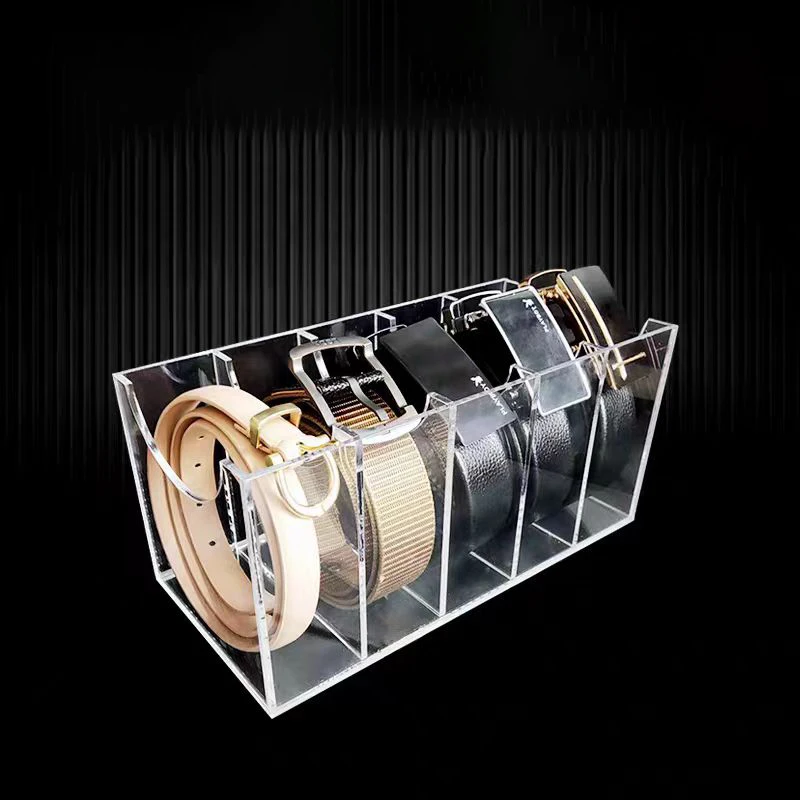
Smart and connected displays represent the cutting edge:
– E-paper displays offer excellent battery life and visibility
– Touch-sensitive crystals allow interaction without buttons
– Always-on displays show time continuously without requiring wrist movement
Watch Accessories, Watch Holder
$94.51 Select options This product has multiple variants. The options may be chosen on the product pageMen's Watch Organizer, Watch Display Case, Watch Organizer
Price range: $112.68 through $169.45 Select options This product has multiple variants. The options may be chosen on the product pageRotating Watch Holder, Watch Holder
Price range: $93.28 through $93.35 Select options This product has multiple variants. The options may be chosen on the product pageAutomatic Watch Winder, Single Watch Winder, Wooden Watch Holder
$201.76 Select options This product has multiple variants. The options may be chosen on the product pageWatch Organizer, Watch Roll Travel Case
Price range: $88.39 through $99.36 Select options This product has multiple variants. The options may be chosen on the product page12 Watch Box, Watch Display Case, Watch Organizer
Price range: $101.20 through $141.30 Select options This product has multiple variants. The options may be chosen on the product page
These innovations show how watchmakers continue to push boundaries while honoring traditional craftsmanship, creating timepieces that balance heritage with modern technology.
Understanding Watch Display Terminology for Collectors and Buyers
Having a firm grasp of watch display terminology enhances your ability to make informed decisions when purchasing timepieces and helps you better appreciate their craftsmanship.
When evaluating a watch, consider how its display features align with your needs:
- For everyday wear, look for dials with high contrast and good legibility
- If you frequently work in low light, prioritize effective luminous elements
- For outdoor activities, scratch-resistant sapphire crystals offer better durability
- If you enjoy watching the mechanical workings, consider skeleton dials or exhibition casebacks
The display features also impact long-term maintenance. Acrylic crystals scratch more easily but can be polished, while sapphire resists scratching but is costly to replace if cracked. Similarly, certain dial finishes may be more susceptible to fading or damage over time.
For collectors, organizing your collection based on display types creates a more cohesive presentation and helps protect watches according to their specific needs. Watches with highly polished bezels might require separate compartments to prevent scratching, while those with luminous dials benefit from occasional exposure to light.
Whether you’re just beginning your watch journey or expanding an established collection, understanding the terminology and features of watch displays allows you to make better choices and more fully appreciate the artistry behind these remarkable timepieces.

